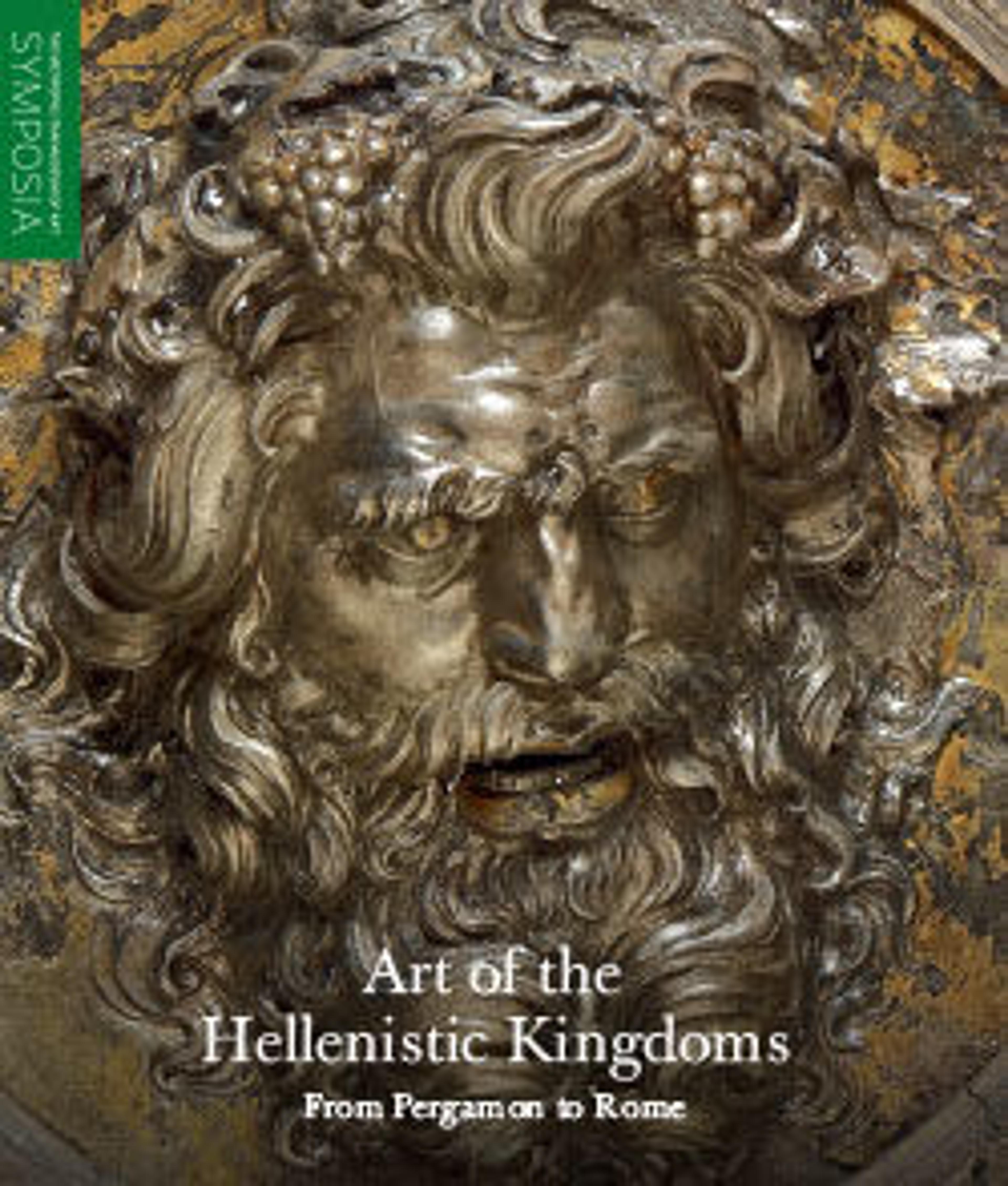Terracotta pyxis (cosmetic box)
on the lid, a relief of Dionysos with maeanads
This fine pyxis is decorated in the so-called "West-Slope" technique, named after the site on the Acropolis hill in Athens where pottery of this type was first identified. Distinguishing hallmarks of the technique are the use of incision, added white, and decoration with a dilute slip that produced a superposed red, pink, or orange color on top of the black-glaze ground. Other notable features of this pyxis are the sculpted feet in the shape of lion's paws, and the relief medallion on the lid. These plastic details suggest that this pyxis was made in Macedonia, since other vessels with similar motifs have been found in tombs from this region. In addition to the crisply incised design on the body, the sculptured additions recall metallic prototypes that reflect the Macedonian taste for luxury items in gold and silver.
This fine pyxis is decorated in the so-called "West-Slope" technique, named after the site on the Acropolis hill in Athens where pottery of this type was first identified. Distinguishing hallmarks of the technique are the use of incision, added white, and decoration with a dilute slip that produced a superposed red, pink, or orange color on top of the black-glaze ground. Other notable features of this pyxis are the sculpted feet in the shape of lion's paws, and the relief medallion on the lid. These plastic details suggest that this pyxis was made in Macedonia, since other vessels with similar motifs have been found in tombs from this region. In addition to the crisply incised design on the body, the sculptured additions recall metallic prototypes that reflect the Macedonian taste for luxury items in gold and silver.
Artwork Details
- Title: Terracotta pyxis (cosmetic box)
- Period: Hellenistic
- Date: 3rd–2nd century BCE
- Culture: Greek, Macedonian
- Medium: Terracotta; west slope
- Dimensions: h. with lid 5 1/4 in. (13.4 cm); d. 5 15/16 in. (15.1 cm)
- Classification: Vases
- Credit Line: Gift of Madame Politis, in memory of her husband, Athanase G. Politis, Ambassador of Greece to the United States, 1979
- Object Number: 1979.76a, b
- Curatorial Department: Greek and Roman Art
More Artwork
Research Resources
The Met provides unparalleled resources for research and welcomes an international community of students and scholars. The Met's Open Access API is where creators and researchers can connect to the The Met collection. Open Access data and public domain images are available for unrestricted commercial and noncommercial use without permission or fee.
To request images under copyright and other restrictions, please use this Image Request form.
Feedback
We continue to research and examine historical and cultural context for objects in The Met collection. If you have comments or questions about this object record, please contact us using the form below. The Museum looks forward to receiving your comments.
